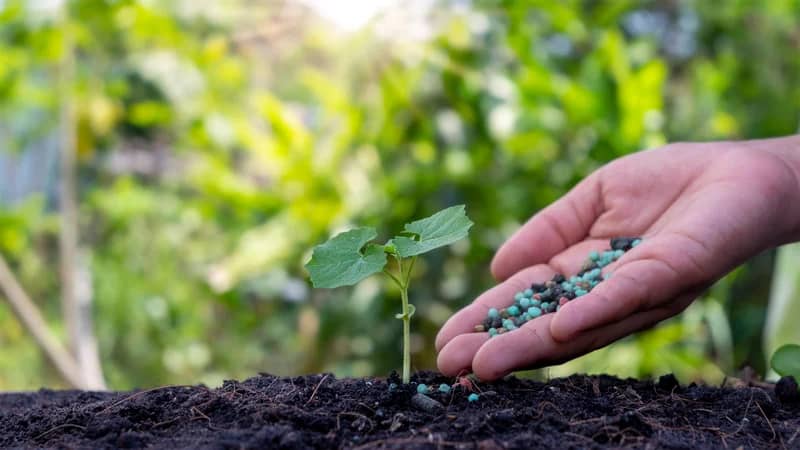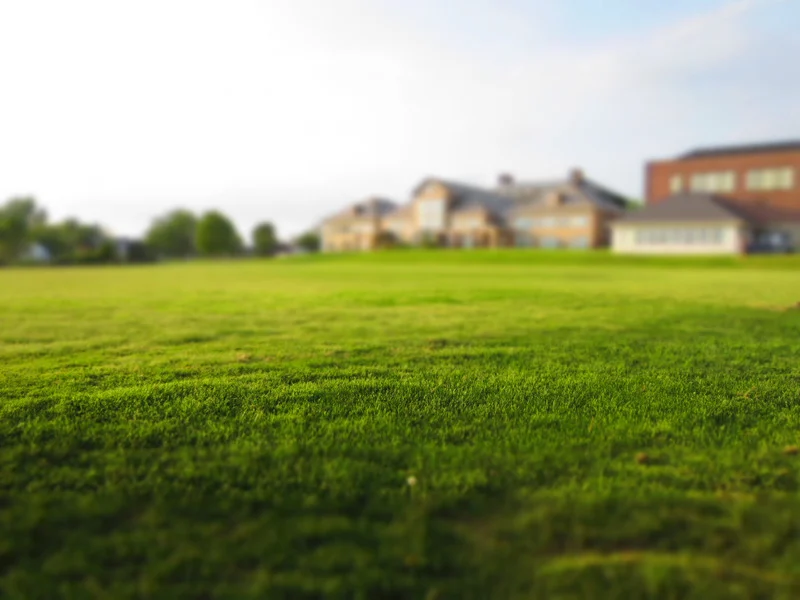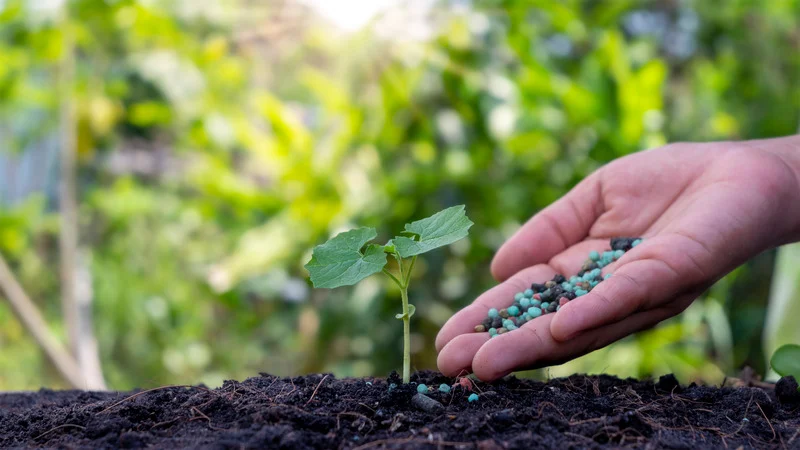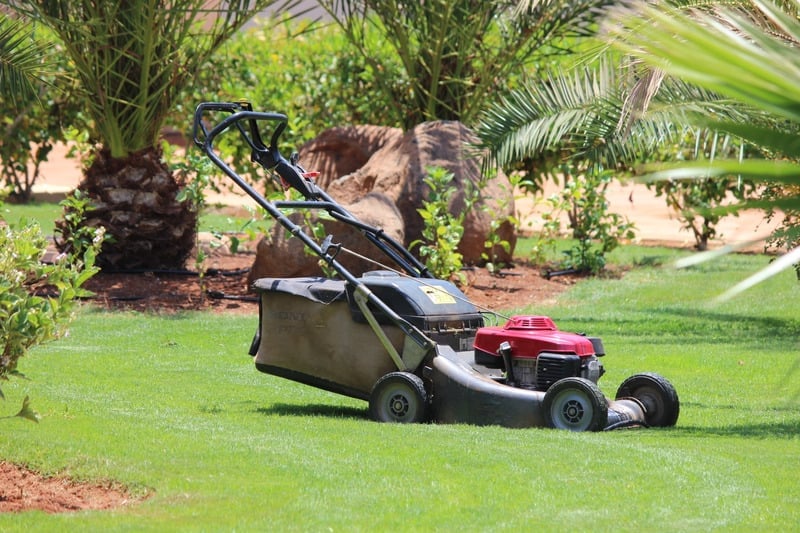
Chinch Bugs vs. Sod Webworms: Spotting the Difference in Your Florida Lawn
Whether you’re a new homeowner in Florida or a long-time resident, you already know that conditions in the Sunshine State…

South Florida lawns face unique obstacles that make achieving a lush, green yard more difficult than in other regions. From our sandy soils to the intense heat and humidity, growing grass here requires a specialized approach. Many homeowners and groundskeepers struggle to keep their lawns looking vibrant and weed-free.
But don’t let these challenges discourage you! With the right fertilizers and cultural practices, you can overcome South Florida’s environmental obstacles and enjoy a stunning lawn. In this guide, we’ll break down why South Florida lawns struggle, share the best fertilizer options, and provide an ideal schedule to keep your grass thriving year-round.

Unlike states up North, most of our grasses do not come from seed. Varieties like fescue, rye, and bluegrass can be easily grown from seed in cooler climates. But in Florida, the vast majority of our grasses – including Celebration Bermuda, Floratam St. Augustine, ProVista St. Augustine, Bimini Bermuda, and Citra Blue St. Augustine – are installed as sod or plugs.
This means that establishing a new lawn or repairing bare spots is more involved than simply scattering some seeds. Sod and plugs require careful site preparation, proper installation, and diligent aftercare to ensure they root in well and thrive.
Another major issue is that our sandy, nutrient-poor soils do not hold nutrients or water very well, unlike the rich loamy soils up North. This means grass roots can’t access the moisture and minerals they need to flourish, leading to weak, sparse growth.
South Florida’s soils are also often highly alkaline, which can make certain nutrients less available to plants. Iron chlorosis, which causes yellowing in grass blades, is a common symptom of alkaline soil. Overcoming these soil limitations is crucial for a beautiful South Florida lawn.
It’s always wise to start with a soil test to identify your lawn’s specific nutrient needs. A soil test will reveal your soil’s pH level and any major nutrient deficiencies or excesses. This information allows you to choose fertilizers that will correct imbalances and support optimal grass growth.
If you come into our office, we can provide soil testing kits and help you interpret the results.
In general, we recommend using a synthetic fertilizer with a 2:1 nitrogen to potash ratio, such as 16-4-8 or 24-2-11. Nitrogen is the key nutrient for promoting lush green top growth, while potassium enhances root development, disease resistance, and overall stress tolerance. This 2:1 ratio provides a balanced approach for most South Florida lawns.
However, it’s best to rotate this synthetic fertilizer with an organic option like Milorganite. Organic fertilizers release nutrients more slowly and steadily, providing a long-term feed. They also add valuable organic matter to the soil, which improves moisture retention and nutrient holding capacity – two critical issues in our sandy soils.
By using synthetic and organic fertilizers in tandem, you’re giving your lawn and soil the comprehensive support they need to thrive in South Florida. The organic fertilizer feeds the beneficial microbes in the soil, while the synthetic fertilizer gives the grass an immediate boost.

Your grass always needs nitrogen to achieve that coveted deep green color. Potash is also essential for overall soil health and disease resistance. Milorganite’s 6-4-0 analysis delivers a beneficial ratio of these two macronutrients. It also contains 2.5% iron, which helps prevent chlorosis in our alkaline soils.
Compared to quick-release synthetic fertilizers, Milorganite’s slow-release formula feeds grass steadily over 6-8 weeks. This continuous nourishment keeps lawns looking great longer while reducing the risk of growth flushes and nutrient leaching.
Milorganite is composed of heat-dried microbes that have digested organic matter. This means that in addition to NPK, it provides a range of secondary nutrients and trace elements that are essential for plant and soil health.
The organic matter in Milorganite also feeds beneficial soil bacteria and fungi. These microbes are crucial for breaking down thatch, improving soil structure, and helping grass roots access nutrients and water. By supporting a vibrant soil food web, Milorganite enhances your lawn’s long-term vigor and resilience far beyond a synthetic fertilizer.
We recommend rotating a synthetic fertilizer (16-4-8 or 24-2-11) with Milorganite every 6-8 weeks from January to May and September to December. These are the peak growing seasons for South Florida lawns, when grass benefits most from regular fertilization.
In early spring, your lawn is coming out of its winter dormancy and beginning to put on new growth. A balanced feeding helps it green up quickly and start filling in. Continuing to alternate synthetic and organic fertilizers throughout spring will support your lawn as it hits its stride.
In fall, your grass is recovering from the intense heat and humidity of summer. Fertilizing every 6-8 weeks helps it rebuild its strength and prepare for the shorter days and cooler nights ahead. A final application in late fall will help your lawn maintain its color and density through the winter months.
From June 1st to September 30th, South Florida enters a fertilizer blackout period. Many counties and municipalities ban the use of nitrogen and phosphorus fertilizers during this time to minimize leaching and runoff during the heavy summer rains.
During this blackout, we recommend applying an organic fertilizer like Comand at the beginning of June and the end of September. Comand’s slow-release formula will carry your lawn through the summer months without the risk of nutrient pollution.
It’s crucial to respect the blackout period not only to comply with local regulations, but also to protect South Florida’s fragile waterways. Excess nutrients from fertilizer runoff can fuel algal blooms, damage aquatic ecosystems, and even harm human health. By using a responsible fertilization schedule, you’re doing your part to keep our environment healthy.
In addition to regular fertilizing, we always suggest feeding your soil with organic matter at least once a month. Products like humic acid, chicken litter, sea kelp, and compost will nourish the soil’s microbiome.
Humic acid is a powerful soil conditioner that improves nutrient uptake, root development, and water retention. It also helps buffer soil pH, making nutrients more available to grass. Chicken litter and sea kelp are rich in organic matter and trace minerals that support soil health and plant growth. Compost adds beneficial bacteria and fungi, which break down thatch and improve soil structure.
By incorporating these organic amendments into your lawn care routine, you’re building a strong foundation for your grass to thrive. Healthy soil is the key to a resilient, beautiful lawn that can withstand South Florida’s challenging conditions.

In addition to soil amendments, there are a few other treatments that can help your South Florida lawn look its best. One is applying a chelated iron supplement, which can help correct chlorosis and enhance the deep green color of your grass.
Another is using a biostimulant like seaweed extract or compost tea. These products contain natural hormones and micronutrients that stimulate root growth, stress tolerance, and overall plant health. They can be especially beneficial for lawns recovering from pest or disease damage.
Finally, core aeration is a mechanical treatment that relieves soil compaction and improves air, water, and nutrient penetration to the roots. Aerating once or twice a year can make a big difference in the health and appearance of your lawn.
For new sod installations, we actually recommend applying Milorganite to the soil before laying the sod. This will incorporate some nutrients and organic matter prior to planting, giving your new lawn a head start.
Spread Milorganite at a rate of 5 pounds per 1,000 square feet and lightly till it into the top few inches of soil. This pre-planting application will help the sod roots establish more quickly and reduce transplant shock.
After the sod is installed, it’s important to keep it consistently moist but not soggy for the first 7-14 days. This ensures the roots have adequate water to knit into the soil. Avoid walking on the sod during this establishment period to prevent damage and uprooting.
Once the sod has rooted in, gradually reduce watering frequency but increase duration to encourage deeper root growth. Wait 30-60 days before beginning a regular fertilizer routine. This allows the young grass to focus its energy on establishing a robust root system before pushing new top growth.
For the first post-installation feeding, use a balanced starter fertilizer with equal parts nitrogen, phosphorus, and potassium (NPK). Apply at a rate of 1 pound of nitrogen per 1,000 square feet to gently ease your new lawn into a regular fertilization schedule.
Yes, spring and fall are the most important times to fertilize South Florida lawns. These are the seasons when grass is actively growing and can make the most use of supplemental nutrients. We recommend applications every 6-8 weeks during these times for best results.
Fertilizing in spring helps your lawn shake off the winter doldrums and burst into lush, green growth. In fall, fertilization helps your grass recover from the stresses of summer and prepare for the cooler, drier months ahead. A consistent spring and fall fertilization schedule will keep your South Florida lawn looking great year-round.
While you may be able to get away with one yearly fertilizer application in other states, that simply doesn’t cut it in Florida. Our lawns grow more or less year-round and require consistent nutrition to combat heat, pests, and disease.
Fertilizing just once a year would be like only eating one meal every 365 days – your grass would be starved for nutrients and unable to maintain its health and appearance. Applying fertilizer in both spring and fall, as well as supporting the grass and soil throughout the year, is crucial for a thriving South Florida lawn.
Remember, fertilization is just one part of a comprehensive lawn care regimen. Proper mowing, watering, and pest control are also essential for keeping your grass in top shape. But by providing your lawn with the right nutrients at the right times, you’re setting the stage for success.
Properly fertilizing your South Florida lawn is both an art and a science. By choosing products tailored to our grass types and soil conditions, timing applications appropriately, and giving your lawn continuous support, you can conquer the challenges of growing grass in the Sunshine State.
Remember to always start with a soil test to identify your lawn’s unique needs. Alternate between synthetic and organic fertilizers for balanced nutrition, and don’t forget to feed your soil with supplements like humic acid and compost. Most importantly, respect the summer fertilizer blackout period to protect our precious waterways.
The Council Oxford team is always here to guide you in developing the ideal fertility regimen for your lawn and landscape. Stop by our store or give us a call to make your neighbors green with envy over your beautiful, thriving grass!